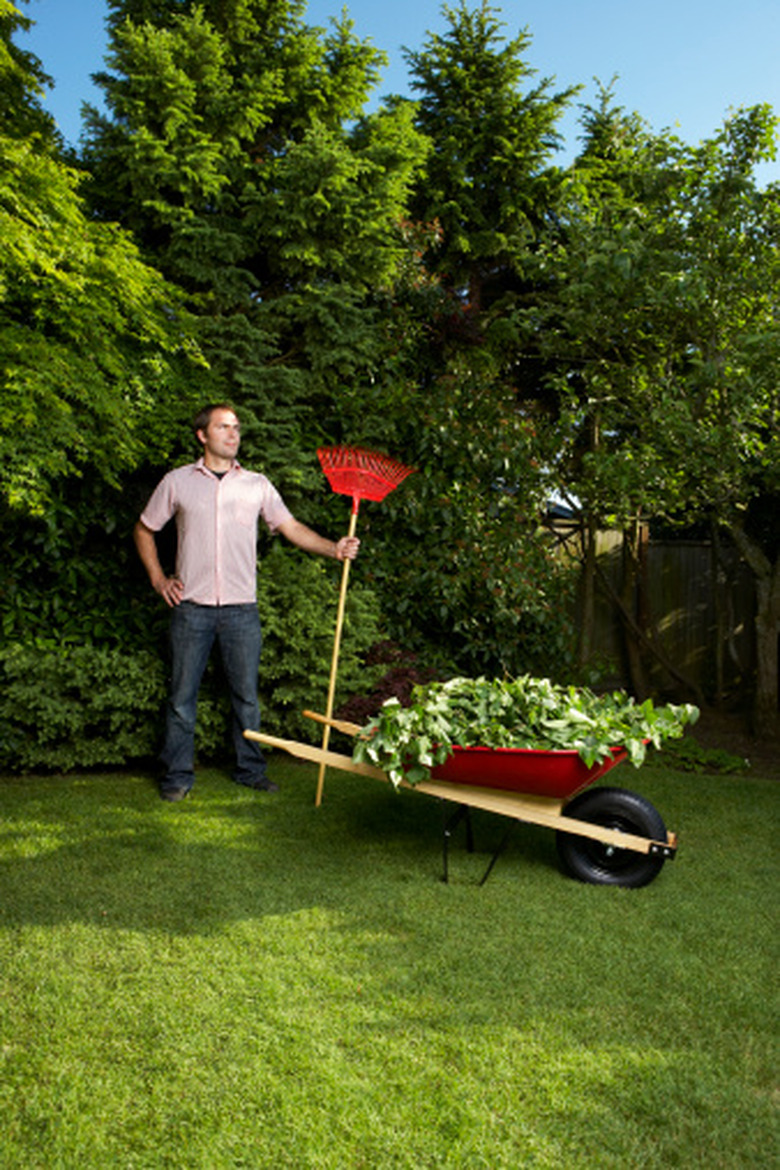Is It Bad To Rake A Yard If The Grass Is Wet?
Homeowners rake the yard to remove thatch, pick up sticks and other debris and encourage healthy growth. Following a few simple guidelines on timing allows homeowners to rake the lawn as needed, without causing damage to grass blades.
Disadvantages
Raking a wet yard removes live grass from the soil. It also compacts the soil, potentially leading to poor turf grass growth over time.
Benefits
Lightly raking soil that is damp, but not waterlogged, improves plant health. It increases air circulation which works to warm the soil and grass sooner. This causes grass to green earlier in the season, leading to a nicely colored spring lawn. This raking works best when done in late winter or early spring after the ground has thawed and when the ground is not wet from rain or melting snow.
Timing
Avoiding raking a muddy lawn reduces the risk of problems. Wait until the ground firms up, even if grass remains slightly damp. Raking at this time proves ideal for removing thatch and reviving matted grass in the spring.
